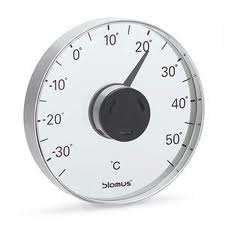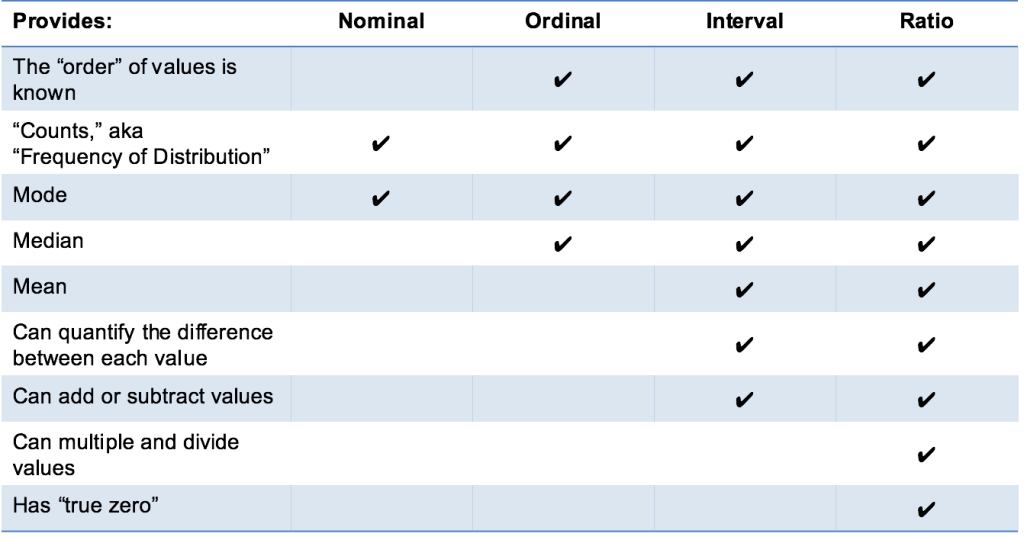i. Nominal Scale: Nominal variables are used to “name,” or label a series of values. A good way to remember all of this is that “nominal” sounds a lot like “name” and nominal scales are kind of like “names” or labels.
Example of Nominal Scale:
What is your gender:
Male
Female
Note: a sub-type of nominal scale with only two categories (e.g. male/female) is called “dichotomous.”
ii. Ordinal Scale: Ordinal scales are typically measures of non-numeric concepts like satisfaction, happiness, discomfort. "Ordinal” is easy to remember because is sounds like “order” and that’s the key to remember with “ordinal scales”–it is the order that matters. Ordinal scales provide good information about the order of choices, such as in a customer satisfaction survey.
Examples of Ordinal Scale:

iii. Interval Scale: Interval scales are numeric scales in which we know not only the order, but also the exact differences between the values. Interval scales give us the order of values + the ability to quantify the difference between each one. The classic example of an interval scale is Celsius temperature because the difference between each value is the same.
For example, the difference between 60 and 50 degrees is a measurable 10 degrees, as is the difference between 80 and 70 degrees.

iv. Ratio Scale: Ratio scales give us the ultimate–order, interval values, plus the ability to calculate ratios since a “true zero” can be defined.



 0
0

